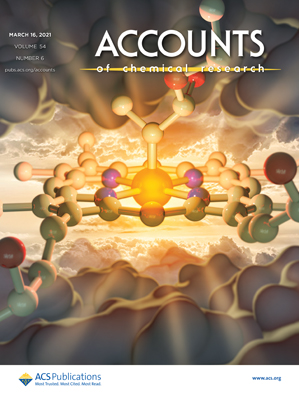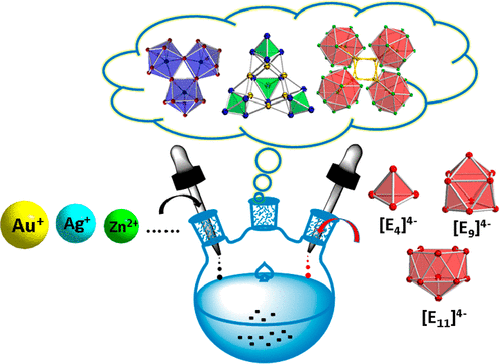
论文题目:Solution-Based Group 14 Zintl Anions: New Frontiers and Discoveries
论文作者:Yi Wang, John E. McGrady, Zhong-Ming Sun*

Abstract:
CONSPECTUS: Group 14 Zintl anions [E-x](q-) (E = Si-Pb, x = 4, 5, 9, 10) are synthetically accessible, and their diverse chemical reactivity makes them valuable synthons in the construction of larger nanoclusters with remarkable structures, intriguing patterns of chemical bonding, and tunable physical and chemical properties. A plethora of novel cluster anions have now been isolated from the reactions of polyanionic [E-x](q-) precursors with low-valent d-/f-block metal complexes, main-group organometallics, or organics in polar aprotic solvents. The range of products includes intermetalloid clusters with transition metal atom(s) embedded in main-group element cages, organometallic Zintl anions in which [E-x](q-) acts as a ligand, intermetallic Zintl anions where [E-x](q-) is bridged by ligand-free transition metal atom(s), organo-Zintl anions where [E-x](q-) is functionalized with organic-group(s), and oligomers formed through oxidative coupling reactions. The synthesis and characterization of these unconventional complexes, where important contributions to stability come from ionic, covalent, and metal-metal bonds as well as weaker aurophilic and van der Waals interactions, extend the boundaries of coordination chemistry and solid-state chemistry. Substantial progress has been made in this field over the past two decades, but there are still many mysteries to unravel related to the cluster growth mechanism and the controllable synthesis of targeted clusters, along with the remarkable and diverse patterns of chemical bonding that present a substantial challenge to theory. In this Account, we hope to shed some light on the relationship between structure, electronic properties, and cluster growth by highlighting selected examples from our recent work on homoatomic deltahedral [E-x](q-) anions, including (1) germanium-based Zintl clusters, such as the supertetrahedral intermetallic clusters [M6Ge16](4-) (M = Zn, Cd) and the sandwich cluster {(Ge-9)(2)[eta(6)-Ge(PdPPh3)(3)]}(4-) with a heterometallic Ge@Pd-3 interlayer; (2) tin-based intermetalloid clusters [M-x@Sn-y](q-) and the application of [Co@Sn9](4-) in bottom-up synthesis; and (3) lead clusters with precious metal cores, including the largest Zintl anion [Au12Pb44](8-). In addition to their intrinsic appeal from a structural and electronic perspective, these new cluster anions also show promise as precursors for the development of new materials with applications in heterogeneous catalysis, where we have recently reported the selective reduction of CO2.
